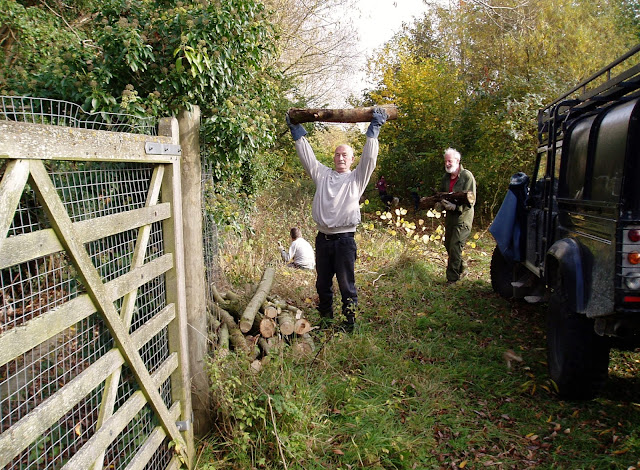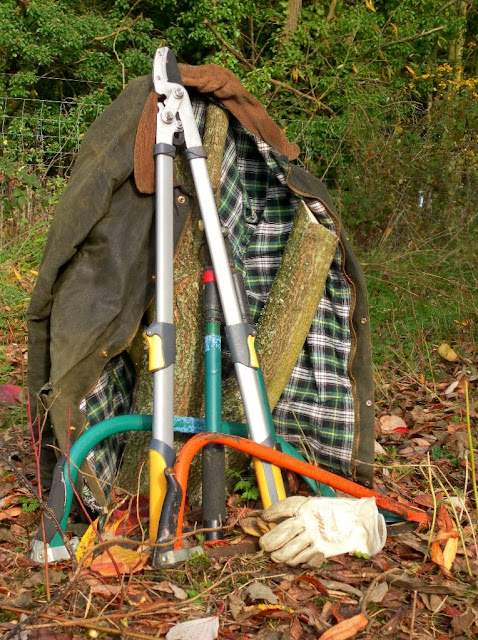If you go down to the woods today,you’re sure of a big surprise.
Because today’s the day
the Teddy Bears have their picnic
We went down to the woods today, but we couldn't find the Teddy Bears. So the Green-Gymmers had their own picnic. Plenty of excellent provisions as last-minute cancellations meant there were only eight of us to eat cake for twelve ...
after a lot of hard work of course.
Some of us may have thought it was going to be the same task as last time we went to Earth Trust: cutting back the 'rides' to give better access for the landrover. Yes, but not quite.
We were told we were going to be working in Paradise (Wood) rather than Little Wittenham Wood, but the first stop was well short of the front gate:
There we were to clear one or two 'stray' trees, and take the reduced vegetation to make a fresh brash pile. Once in the woods, it became serious: many more thorns and roses determined to fight back.
Some big branches had to be cut down by the site warden:
They were then cut up by us volunteers, and dragged into big piles inside the woods:
Unlike at Little Wittenham, growth had to cut down to ground level:
We were glad to accept the site warden’s offer to come back with a chainsaw to finish this particular stump. Meantime it served as a tool-tidy and coat-stand:
The day had started very dull and threatening, but after coffee the sun came out and showed us some brilliant colours in the woods. Such as the Spindle trees with red flowers and yellow seeds:
Also on the plus side, there were no hills to climb, and only short, dry walks from the muddy car-park. Sill plenty more work for us at our next visit.
































